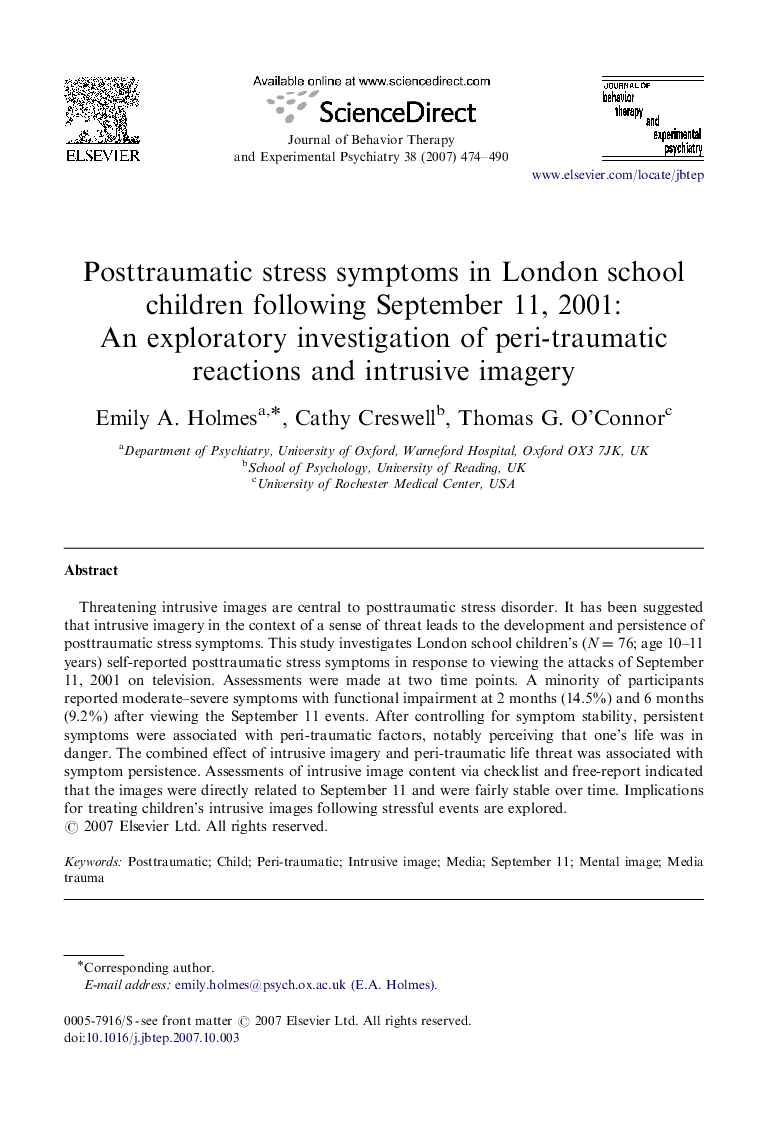| Article ID | Journal | Published Year | Pages | File Type |
|---|---|---|---|---|
| 10448346 | Journal of Behavior Therapy and Experimental Psychiatry | 2007 | 17 Pages |
Abstract
Threatening intrusive images are central to posttraumatic stress disorder. It has been suggested that intrusive imagery in the context of a sense of threat leads to the development and persistence of posttraumatic stress symptoms. This study investigates London school children's (N=76; age 10-11 years) self-reported posttraumatic stress symptoms in response to viewing the attacks of September 11, 2001 on television. Assessments were made at two time points. A minority of participants reported moderate-severe symptoms with functional impairment at 2 months (14.5%) and 6 months (9.2%) after viewing the September 11 events. After controlling for symptom stability, persistent symptoms were associated with peri-traumatic factors, notably perceiving that one's life was in danger. The combined effect of intrusive imagery and peri-traumatic life threat was associated with symptom persistence. Assessments of intrusive image content via checklist and free-report indicated that the images were directly related to September 11 and were fairly stable over time. Implications for treating children's intrusive images following stressful events are explored.
Related Topics
Health Sciences
Medicine and Dentistry
Psychiatry and Mental Health
Authors
Emily A. Holmes, Cathy Creswell, Thomas G. O'Connor,
